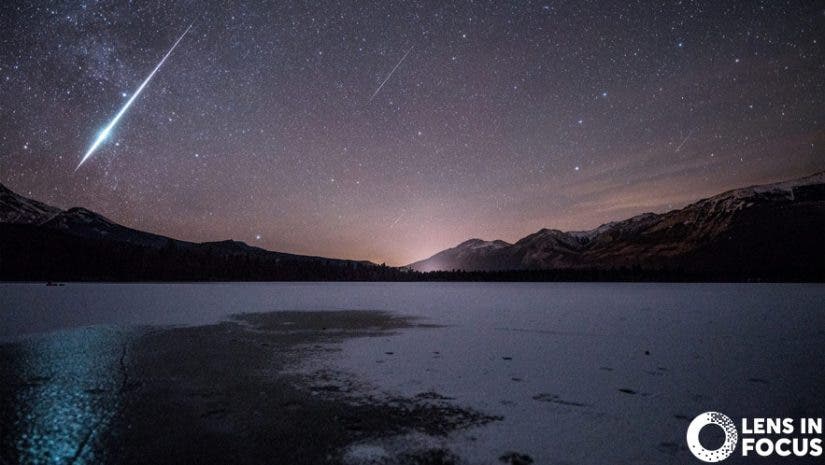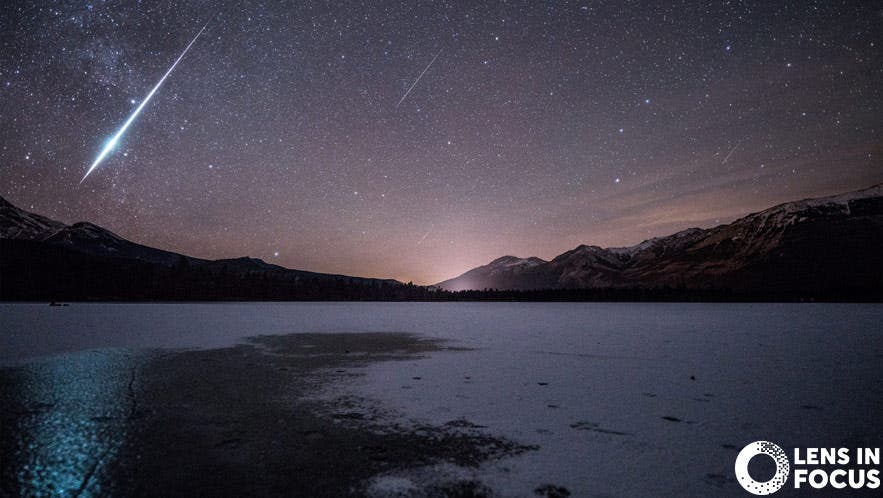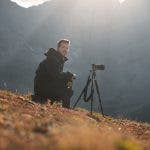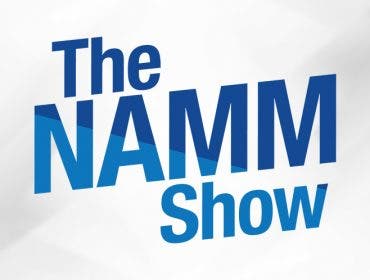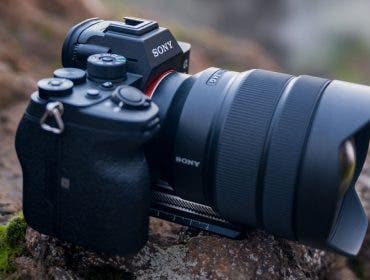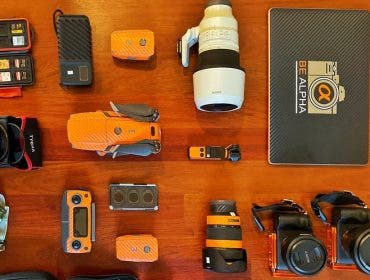Stargazing and photographing the night sky during a meteor shower can either be very exciting or very frustrating. Although you can locate the radiant (the point of origin in the sky that the meteor will appear to come from), meteors can often be seen in a number of directions. This means that a great image requires a lot of planning and also a bit of luck.
I was nearing the end of a 10-day road trip where I was shooting timelapses in each of the dark sky parks in Alberta, Canada. Knowing the Geminids (a meteor shower) would be peaking toward the end of my trip, I planned that evening to be in one of my favorite locations: Jasper National Park.
The photo:
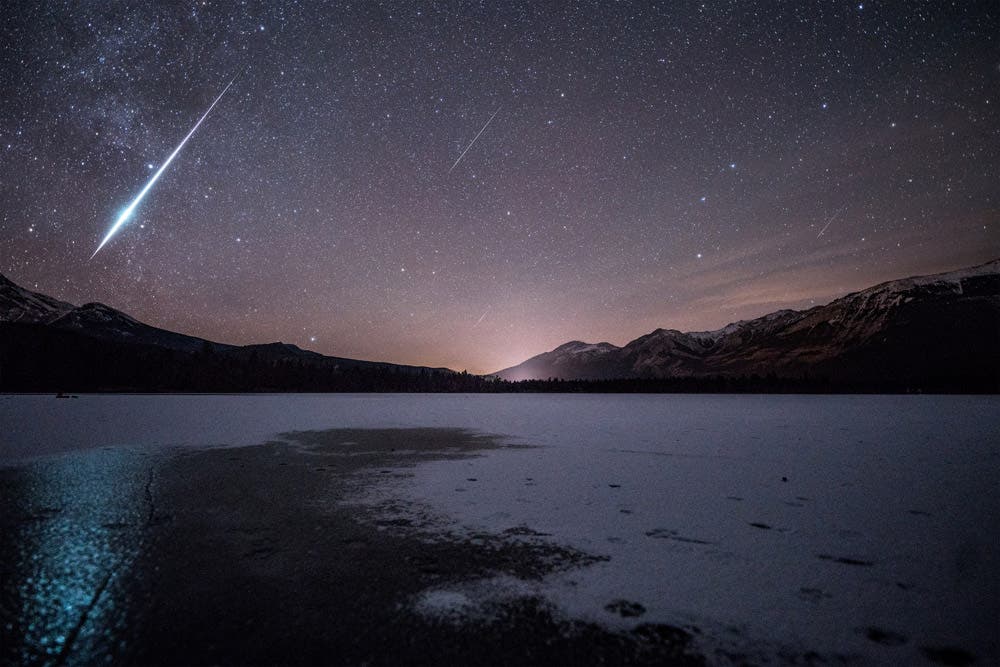
Although I normally would have framed my image to include the radiant of the meteor shower, on this particular night there was a chance of catching the Northern Lights, too. With this in mind, I picked out a location with a composition that would provide a clear view to the north in case the aurora became active at any point during my timelapse.
The lens:
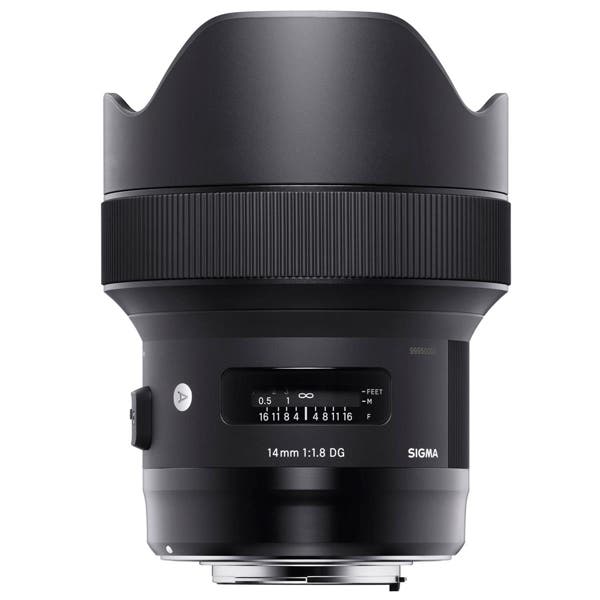
Sigma 14mm f/1.8 DG HSM ART Lens ()
Before I even set up, I knew I was going to use the Sigma 14mm f1.8 ART lens. This lens is already one of my go-to lenses for timelapse, and was perfect for this scenario. The fast aperture would allow me to keep my exposures to 10 seconds while still letting enough light in. This shutter speed would make sure my stars stayed tack sharp and also valuable time across shooting the entire timelapse sequence. The ultra-wide focal length of 14mm also made this lens a great choice. Covering a larger portion of the sky increased my chances of catching a meteor somewhere in the frame.
I set my camera up and hung out in the below-freezing temperature while watching one of the most active meteors showers I’ve seen in my life. Partway through, I saw a brilliant fireball light up the sky. I knew it was close to the direction my camera was pointing, but I wasn’t positive if it would be in the frame. It took every bit of restraint to not stop my timelapse and check right at that second.
When I finally scrolled through my images later, I not only found that I had captured the fireball, but the same frame also captured three other meteors! I couldn’t believe it.
The Northern Lights were never visible, but a fireball and three other meteors in a single exposure was a once-in-a-lifetime capture of a moment I’ll never forget.
The image was also featured by NASA as the Astronomy Picture of the Day on Dec 16, 2017.
Feature photo by Jack Fusco
